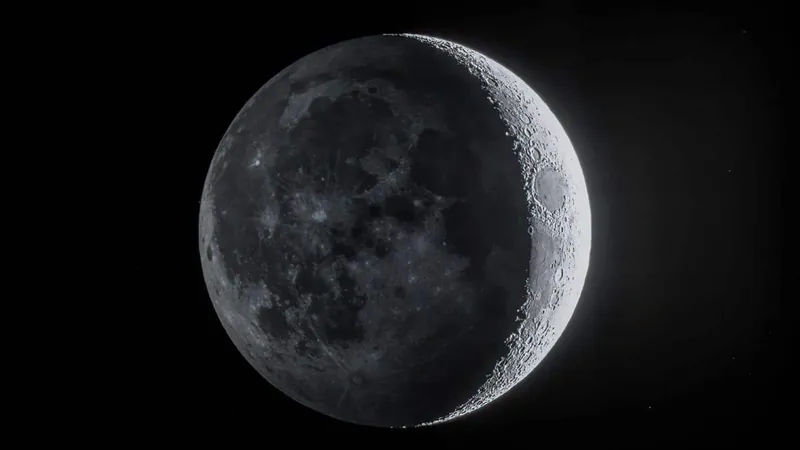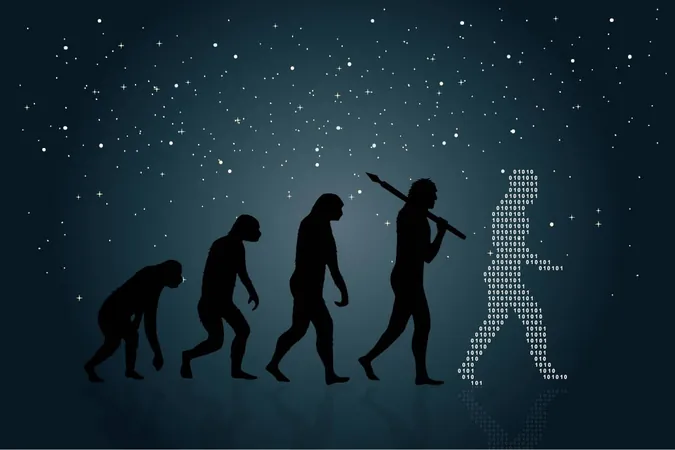
Earth Could Have 'Stolen' Its Moon: New Research Breaks Ground on Celestial Origins
2024-10-05
Is the Moon really Earth’s adopted child?
A groundbreaking study by astronomers Williams and Zugger proposes a radical new origin theory for our Moon, suggesting that it may have originated elsewhere in the solar system—only to be drawn to Earth by its powerful gravitational pull. This exciting research challenges the long-accepted Giant Impact Hypothesis, which posits that a collision with a massive object led to the debris that formed both our planet and its celestial companion.
Introducing the Binary Capture Hypothesis
The researchers have put forth a fascinating concept known as "binary capture." In this scenario, two gravitationally bound celestial bodies can encounter a third body in space. The third body then captures one of the original pair, causing them to separate while the captured body enters a new orbit around the gravitationally dominant body. This phenomenon has been observed with Neptune's moon Triton, which orbits in a retrograde motion—opposite to its planet's rotation—adding credence to the idea that moons can be captured rather than formed locally.
Revolutionizing Our Understanding of the Moon’s Orbit
In examining the Moon’s orbit, Williams and Zugger argue that its alignment is inconsistent with the expectations set by the debris cloud theory. Their sophisticated mathematical models indicate that a body the size of the Moon could have been captured by a planet-sized body akin to Earth. Interestingly, their findings also suggest that Earth could have potentially captured even larger objects, perhaps even as substantial as Mercury or Mars, although such scenarios would likely result in unstable orbits.
The Receding Mystery of the Moon
One compelling piece of evidence supporting the binary capture theory is the observed rate at which the Moon is receding from Earth. Current estimates suggest that the Moon moves approximately 1.5 inches away from our planet each year. This gradual separation can align with the new capture theory, as it implies a different history than that proposed by the impact hypothesis.
This innovative research not only provides a fresh perspective on our celestial neighbor but also opens up exciting discussions about the dynamic interactions between celestial bodies in our solar system. As scientists continue to explore the vast complexities of space, the possibility of discovering even more unexpected celestial relationships remains tantalizingly close.
Could the Moon’s twisted journey through the cosmos redefine how we view our place in the universe? Stay tuned as we uncover more from this intriguing chapter in celestial history!




 Brasil (PT)
Brasil (PT)
 Canada (EN)
Canada (EN)
 Chile (ES)
Chile (ES)
 España (ES)
España (ES)
 France (FR)
France (FR)
 Hong Kong (EN)
Hong Kong (EN)
 Italia (IT)
Italia (IT)
 日本 (JA)
日本 (JA)
 Magyarország (HU)
Magyarország (HU)
 Norge (NO)
Norge (NO)
 Polska (PL)
Polska (PL)
 Schweiz (DE)
Schweiz (DE)
 Singapore (EN)
Singapore (EN)
 Sverige (SV)
Sverige (SV)
 Suomi (FI)
Suomi (FI)
 Türkiye (TR)
Türkiye (TR)